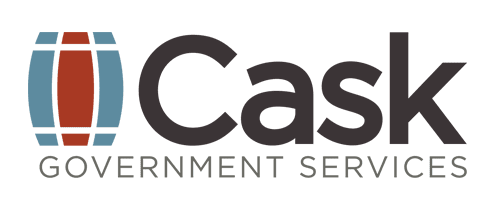 The Cybersecurity Maturity Model Compliance (CMMC) program serves as a verification mechanism to ensure appropriate levels of cybersecurity controls and processes are adequate and in place to protect Federal contract Information (FCI) and Controlled Unclassified Information (CUI) that resides on the Department’s industry partners’ networks. Under the CMMC program, DoD contractors are evaluated based upon the security configuration of their Information Technology environment, in addition to their documentation which includes policies, plans and procedures, these are called processes.
The Cybersecurity Maturity Model Compliance (CMMC) program serves as a verification mechanism to ensure appropriate levels of cybersecurity controls and processes are adequate and in place to protect Federal contract Information (FCI) and Controlled Unclassified Information (CUI) that resides on the Department’s industry partners’ networks. Under the CMMC program, DoD contractors are evaluated based upon the security configuration of their Information Technology environment, in addition to their documentation which includes policies, plans and procedures, these are called processes.
CMMC integrates elements from NIST, FAR and DFARS standards into a comprehensive maturity model.
Breaking Down the CMMC Framework?
A cybersecurity framework outlines the best practices to reduce a company’s exposure to cybersecurity vulnerabilities. Version 2.0 of the CMMC framework is documented in the Cybersecurity Maturity Model Certification. The framework has four components and three certification levels. The four components are listed as:
- Domains. Seventeen areas of cybersecurity, such as maintenance and authentication.
- Capabilities. Forty-three functions are divided among the 17 domains. These functions include access control capabilities that have internal and remote access.
- Processes. Process levels that reflect the level of institutionalization of cybersecurity policies.
- Practices. Identifies the depth of cybersecurity processes to ensure all domains and capabilities are secure.
Each level of certification has different standards for the four components. Companies must eventually certify all levels. Ongoing certifications will be required once all certification levels are met.
Level one practices indicate a basic cybersecurity level. For example, a level one process safeguards information while a top-level must protect and mitigate advanced persistent threats (APTs). To achieve a top-level rating for practices, contractors must standardize and optimize cybersecurity policies using sophisticated technologies that counter APTs.
Why Is CMMC Important?
In December 2023, OIRA released the proposed CMMC rule. While it isn’t expected to be final until 2025, now is the time to prepare and make plans for your assessment and ensure compliance. Organizations wanting to do business with the DoD must meet the CMMC requirements listed in their contract. At a minimum, all contractors must be certified at level one. If companies are unable to prove compliance, they will become ineligible for DoD contracts. This applies to all sizes of businesses aspiring to engage with the DoD’s significant budget allocations.
The Path to CMMC Certification
Companies must first determine their level of compliance. The compliance level determines what standards must be met to achieve certification. The DoD provides a self-assessment tool to help companies prepare for an audit. Organizations must contact an accredited CMMC Third-Party Assessment Organization (C3PAO) to schedule certification.. The C3PAO conducts an assessment and identifies any gaps in compliance. Businesses have 90 days to rectify the deficiencies to achieve certification. Cask is an authorized C3PAO and is ready to support your organization.
Seeking CMMC Assistance
Navigating CMMC requirements can be overwhelming, even for companies with dedicated IT personnel. Given the scope of the CMMC, internal resources will need time to come up to speed — time that organizations may not have. Rather than wait for internal resources, consider talking to Cask Government Services. We were the third organization to receive C3PAO accreditation and have trained staff to help with pre-assessments as well as formal assessments. Now is the time to start preparing for CMMC compliance if your organization plans to begin or continue to work as a defense contractor. Contact us for any questions at [email protected]
FAQs
Why is CMMC important for my business?
CMMC is crucial for your business if you want to engage with the Department of Defense (DoD). CMMC serves as a verification mechanism to ensure that your company has appropriate cybersecurity controls and processes in place to protect Federal contract Information (FCI) and Controlled Unclassified Information (CUI). Meeting CMMC requirements is essential for DoD contracts, and failure to comply can make your business ineligible for these contracts.
What does the CMMC framework consist of?
The CMMC framework has four components: domains, capabilities, processes, and practices. Domains include 17 areas of cybersecurity such as maintenance and authentication. Capabilities are 43 functions divided among the domains, including access control capabilities. Processes represent the level of institutionalization of cybersecurity policies. Practices identify the depth of cybersecurity processes to ensure all domains and capabilities are secure.
How can my business achieve CMMC certification?
To achieve CMMC certification, your business must first determine its level of compliance. The compliance level determines what standards must be met for certification. The DoD provides a self-assessment tool to help companies prepare for an audit. After assessing compliance, businesses must contact an accredited CMMC Third-Party Assessment Organization (C3PAO) to schedule certification. The C3PAO conducts an assessment and identifies any compliance gaps. Businesses have 90 days to rectify deficiencies and achieve certification.
Can my business get assistance in navigating CMMC requirements?
Yes, navigating CMMC requirements can be overwhelming, especially for businesses without dedicated IT personnel. If you need assistance, consider reaching out to Cask Government Services, an authorized C3PAO with trained staff to help with pre-assessments and formal assessments. They can guide you through the process and ensure your organization is prepared for CMMC compliance.





